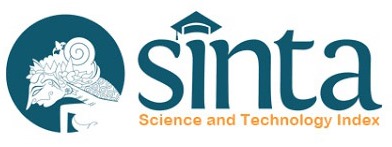BIOETHANOL PRODUCTION FROM SEAWEED PROCESSING WASTE BY SIMULTANEOUS SACCHARIFICATION AND FERMENTATION (SSF)
Abstract
Keywords
Full Text:
PDFReferences
Adini S., Kusdiyantini E., & Budiharjo A. (2015). Production of bioethanol from seaweed and waste for Gracilaria sp. With different saccharification methods. Bioma. 16(2), 65-75.
Andhikawati A. (2014). Screening and utilization of endophytic caps in the manufacture of bioethanol from agar-processing waste. Thesis. Bogor (ID): Bogor Agricultural University.
Anindyawati T. (2009). Prospect of enzyme and lignocellulose waste for bioethanol production. BS. 44(1), 49- 56.
Borines MG., Leon RLD., & Cuello JL. (2013). Bioethanol production from the macroalgae Sargassum spp. BioresourceTechnology. 138, 22-29.
El-Naggar NE., Deraz S., & Khalil A. (2014). Bioethanol production from lignocellulosic feedstocks based on enzymatic hydrolysis: current status and recent development. Biotechnology. 13(1), 1-21.
FAO. (2014). The state of the world fisheries and aquaculture: opportunities and challenges. Food And Agriculture Organization Of The United Nations. Rome.
Kim HM., Wi SG., Jung S., Song Y & Bae HJ. (2015). Efficient approach for bioethanol production from red seaweed Gelidium amansii. Bioresource Technology. 175, 128-134.
Ministry of Marine Affairs and Fisheries. (2014). Analysis of marine and fisheries data in 2014. Data, Statistics and Information Center of the Ministry of Marine Affairs and Fisheries. Jakarta.
Martosuyono P., Judge A., & Fawzya YN. (2015). Chemical pretreatment and enzymatic saccharification of seaweed solid waste. Squalen Bull. of Mar. & Fish Postharvest & Biotech. 10(2), 61-71.
Miller GL. (1959). Use of dinitrosaIicyIic acid reagent for determination of reducing sugar. Analytical Chemistry. 31(3), 426-428.
Nahak S., Nahak G., Pradhan I., & Sahu RK. (2011). Bioethanol from marine algae: a solution to global warming problem. J. Appl. Biol. Sci. 1(4), 74-80.
Nurhayati & Kusumawati R. (2014). Cellulose acetate synthesis from effluent treatment waste. JPB Fisheries. 9(2), 97-107.
Pasanda OSR., Azis A., & Kusuma HS. (2016). Utilization of waste seaweed through pretreatment with liquid hot water method and simultaneous fermentation using Bacteria Clostridium thermocellum. J. Mater. Environ. Sci. 7(7), 2526-2533.
Sari RN., Sugiyono., & Assadad L. (2013). Optimization of hydrolysis and fermentation process time in bioethanol production from industrial processing waste (Gracilaria sp.). JPB Fisheries. 8(2), 133-142.
Stevulova N., Cigasova J., Estokova A., Terpakova E., Geffert A., Kacik F., Singovszka E., & Holub M. (2014). Properties characterization of chemically modified hemp hurds. J. Materials. 7, 8131-8150.
Uju, Wijayanta AT., Goto M., & Kamiya N. (2015). Great potency of seaweed waste biomass from the carrageenan industry for bioethanol production by peracetic acid-ionic liquid pretreatment. J. Biomass and Bioenergy. 89, 63-69.
Wei N., Quarterman J., & Jin Y. (2013). Marine macroalgae: an untapped resource for producing fuels and chemicals. Trends in Biotechnology. 31(2), 70-77.
Wahono SK., Rosyida VT., Darsih C., Diah Pratiwi, Frediansyah A., & Hernawan. (2015). Optimization of simultaneous saccharification and fermentation incubation time using cellulose enzyme for sugarcane bagasse on the second-generation bioethanol production technology. Energy Procedia. 65, 331-336.
Wiratmaja IG., Kusuma IGBW., & Winaya INS. (2011). Making second generation ethanol by utilizing Eucheuma cottonii seaweed waste as raw material. Scientific Journal of Mechanical Engineering Cakra M. 5(1), 75-84.
Zhang W., Lin Y., Zhang Q., Wang X., Wu D., Kong H. (2013). Optimisation of simultaneous saccharification and fermentation of wheat straw for ethanol production. Fuel. 112, 331-337
DOI: https://doi.org/10.15578/squalen.281
Refbacks
- There are currently no refbacks.
ISSN : 2089-5690(print), E-ISSN : 2406-9272(online)
This work is licensed under a Creative Commons Attribution-NonCommercial-ShareAlike 4.0 International License.











